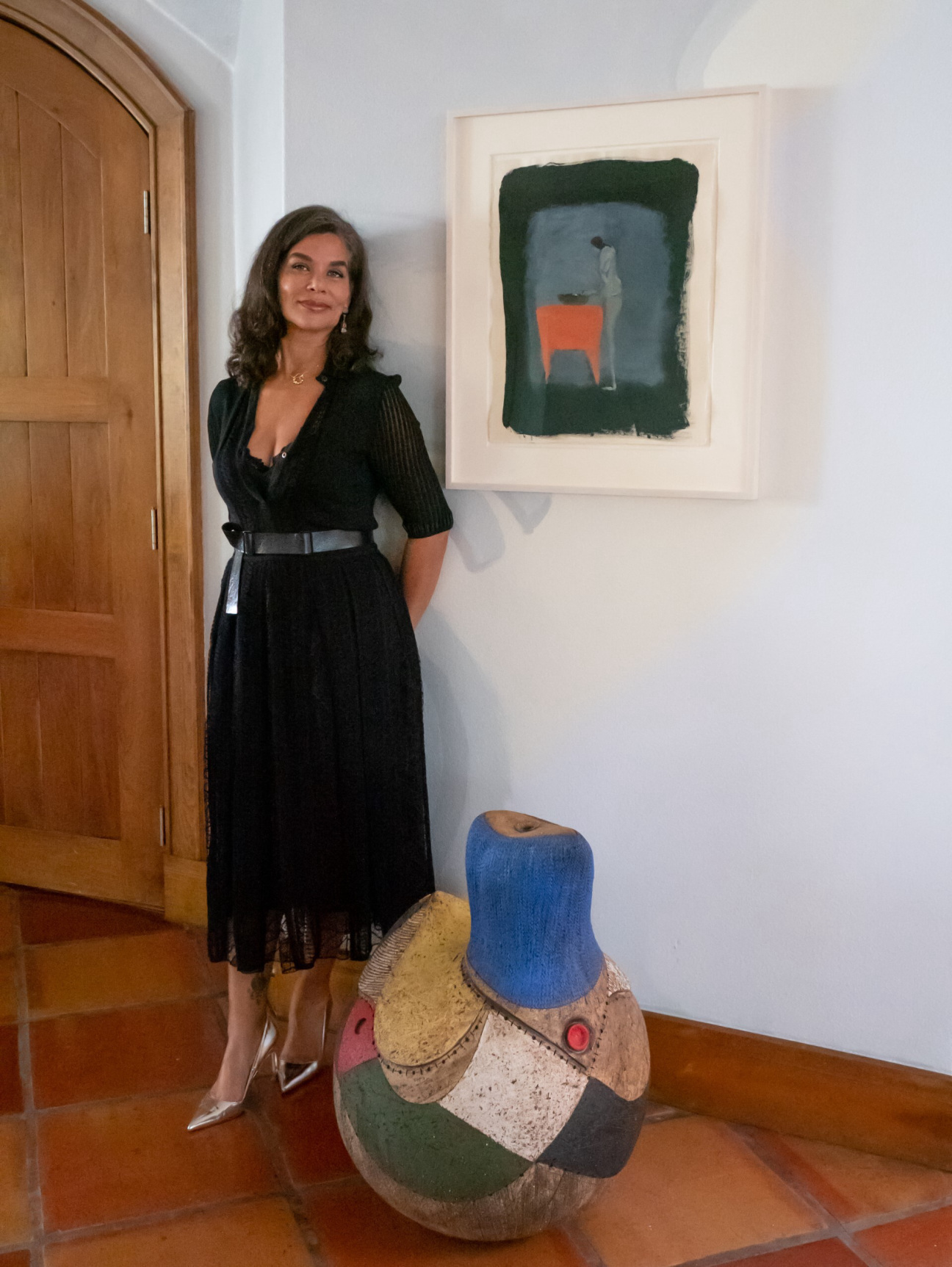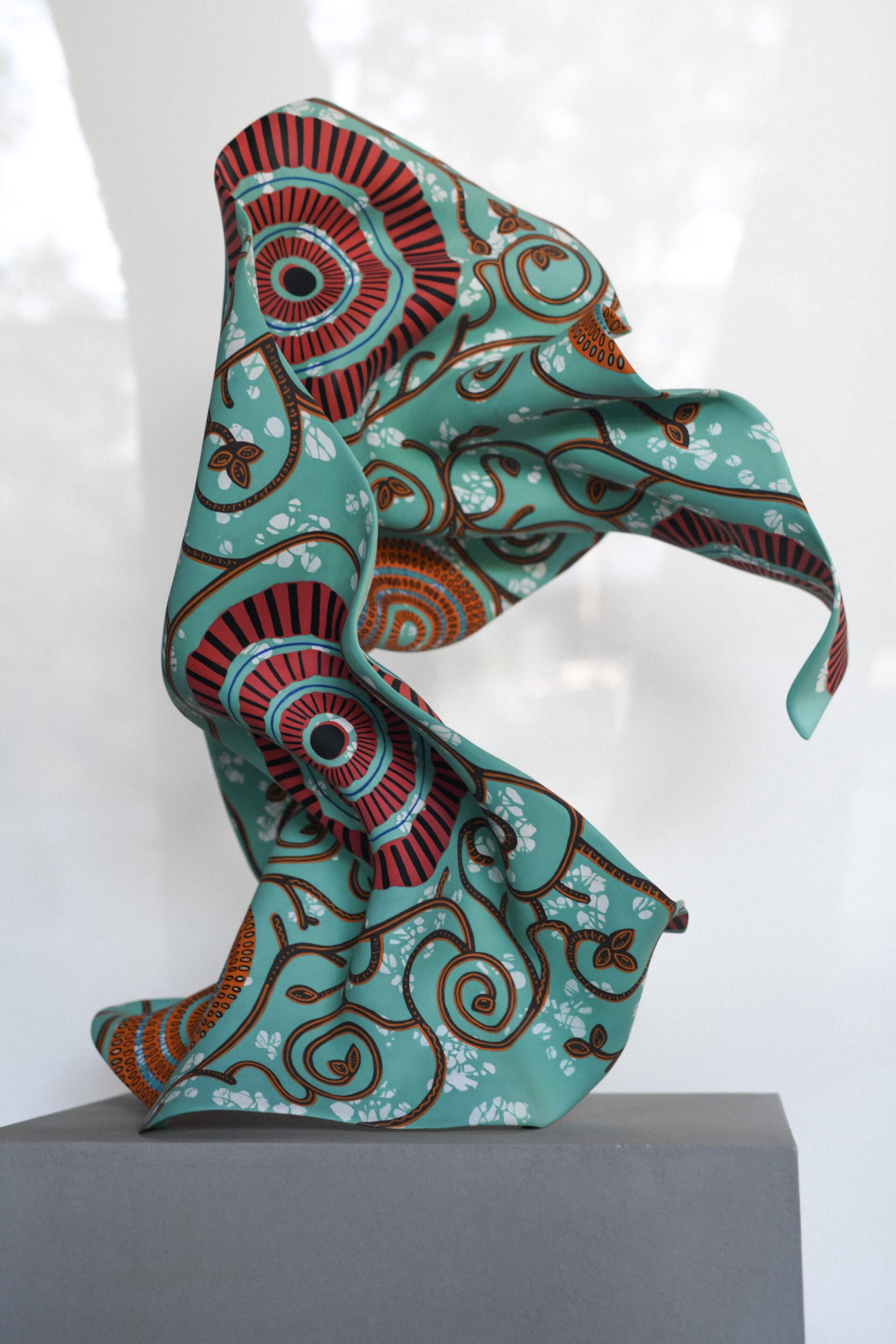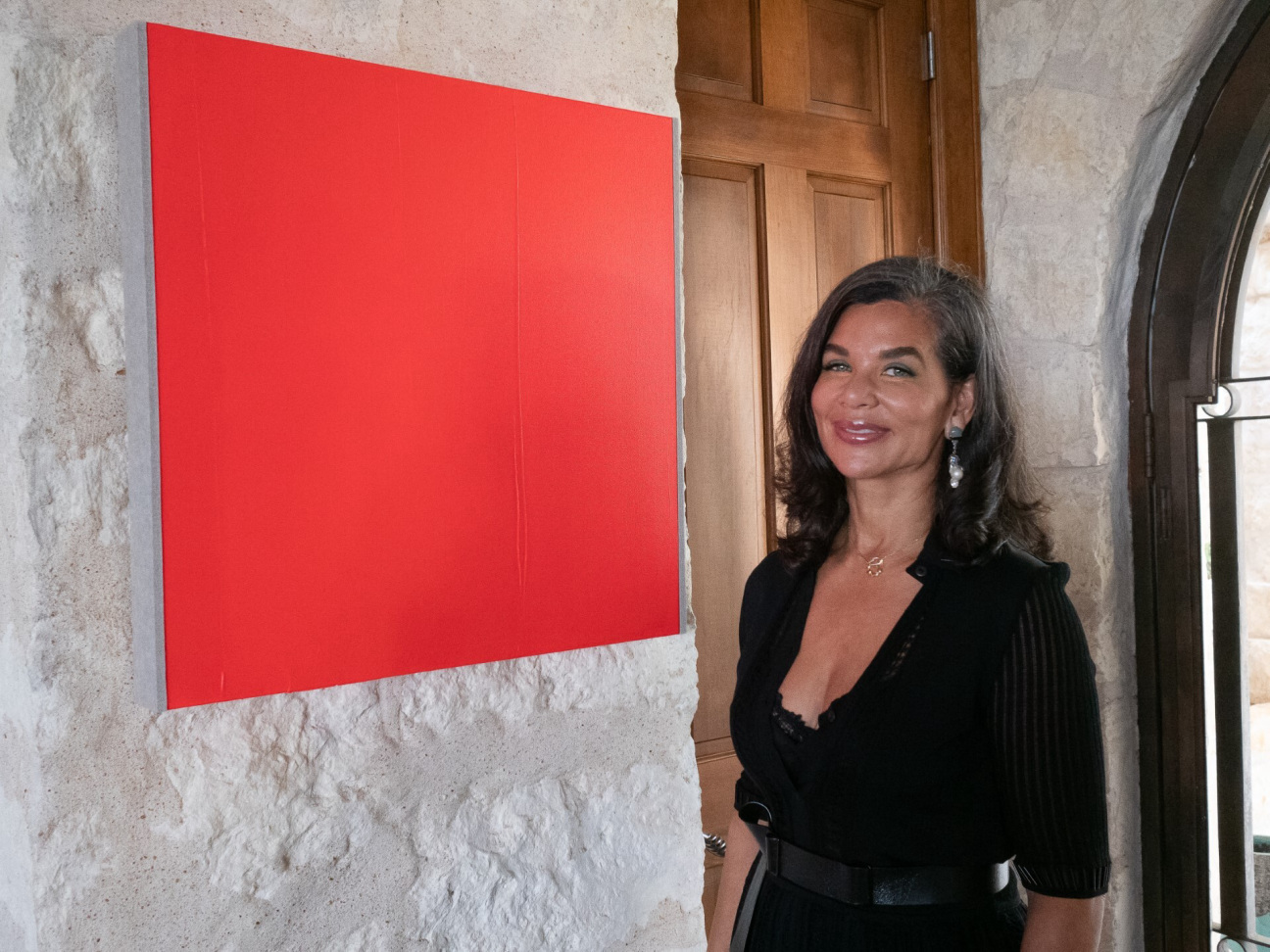
This month, writer, activist, and CULTURED contributor Rachel Cargle presents a series of conversations with Black collectors that celebrates community, history, and beauty. Up first is the doctor duo behind the nonprofit Wright Nao Art, which is dedicated to creating inroads for emerging Black artists at hallowed institutions.
Like the rest of us, Suzanne McFayden walks through the world with intersecting identities: Black, woman, immigrant, mother, divorcee, writer. All of these pieces make up the lens through which she views art. The Jamaica native has taken a reflective approach to collecting, only grabbing hold of pieces that give her that “tingling in her stomach.” Her Austin, Texas home shines with pieces from the likes of American artists Jerrell Gibbs and Deborah Roberts.
The role of collector isn't a passive one for McFayden. Here, she shares the ways that the practice of collecting art can be a gateway to community, mentorship, self-reflection, and even a legacy of inspiration—reminding the world that art is for everyone.
Can you describe what it's like for you to see a piece and feel deeply that it belongs in your collection?
I usually get a sort of tingling in my stomach. You know, I want to get closer, I want to know more. And then the true test is if I'm still thinking about it, like sleep dreaming the next morning. But yes, if I forget about it, or I don't really want to go closer, then I don't think it's for me.

What part of your own story shows up in your collection?
I think my entire story shows up in my collection. Being Black, being a woman, being an immigrant, being divorced, being a writer, being a mother—all parts of me are in my collection.
Are there any pieces that reflect a particular aspect of yourself directly?
There have been several. One is [a work by] artist Deborah Roberts, who does collage. She chronicles the Black experience, which is making a way out of no way, finding yourself, creating yourself. Her work really resonates with me in that regard.
I also see it a lot in Wangechi Mutu’s work—bringing forward our history, because there's some cellular memory that we keep up within us. Then I think about an artist like Billie Zangewa and the tenderness that comes through in her works. She does a lot of work regarding her son, and [captures] the tenderness that historically is not afforded to Black women and their children, but yet still is very much present.

What do you feel your role is in the art ecosystem?
I like this question. I like what you said about accessibility because so often we hear about art as being inaccessible to all but the select few, but you're right. You can go to a museum, you can find your local gallery, you can engage in conversations about the work. There are always opportunities to get “eye mileage.”
I'm pretty sure I didn't set out to be a collector. I just set out to have things that made me feel good and made my space feel good for myself and my children—things that reflected who we are. Now, several years in on my journey, I do feel that it's important to be a custodian of some of this work. Whether eventually things will go to the museum, or they'll continue on in my family, I don't know. But I do feel that it's important when someone like myself steps up and says, “This is important.”

Can you talk about ways that you lean into art as a student—someone who is not just witnessing, but really learning and studying?
“Eye mileage” is a term that I saw [collector] Keith Rivers use, so I need to give him credit, because I think it's a wonderful, wonderful term. I didn’t study art history, but I did take a couple of classes in college. And then in about 2010, I started seeing curators that looked more like me, or who are more reflective of my heritage and all of its complexity. That's what really started me on the journey that I've been on since then.
I do something art-related every day, whether it's reading Artnet News or CULTURED. When I travel, I always try to get to a local museum or see local artists. When I went to South Africa last September, I did a studio visit with Ravelle Pillay, who lives in Johannesburg. I also went to different galleries in Cape Town. The more I study, the more I want to know. It feels like a respite for the mind from the other things that I do—this bottomless well that I'm fortunate enough to be able to visit.
What have been avenues of mentorship for you in the art world? Whether you were being mentored or you were mentoring others, what has that looked like for you?
I'm gonna start with mentoring others, because I think it is very important to remember that there's many ways that you can mentor people. You know, lend an ear, lend a little money if you can. If an artist wants to talk to you, maybe find time. I think that is the responsibility of good collectors, to share information and to share knowledge.
In terms of being mentored, I would say, find people that align with how you want to engage with the art world. Find the lane that matters most to you and see who in that space is doing stuff. Reach out and see if you can have a conversation with them.

How do you see your older self in relationship with your art? You mentioned perhaps gifting your pieces to museums or passing them down to your family, but how do you fantasize about your relationship to art as you get older?
A story about my collection was published in a newspaper in London, and someone reached out to me and said, “I never knew that someone like me, or you, could do what you're doing. Because of you, I've started having conversations with my children about art.” That was so meaningful to me because I understood then how, intentionally or unintentionally, your actions can influence a broader society.
So I would just say that with my older self, I hope I will have done as much as I can for anybody who sees any resemblance of themselves through me; to be a reminder that you can pick paths that weren't available to you when you were younger, or paths that you didn't know that you could go down. I hope that when I look back, I will feel proud of the work that I did.










 in your life?
in your life?

